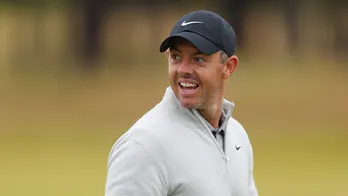Biological passport has brought a paradigm shift among cheaters
It's been a cat and mouse game between dope cheats and anti-doping agencies. As doping has evolved over the years with athletes finding newer ways to use performance enhancing drugs, the World Anti-Doping Agency (WADA) has also raised the stakes pumping in money and resources for scientific research and evolving ways to catch cheaters off guard.  PREMIUM
PREMIUM
The Athlete Biological Passport (ABP) that was launched in 2009 was developed to uncover blood doping, and later Erythropoietin-Stimulating Agents (EPOs). From the traditional anti-doping testing that aimed to directly identify prohibited substances in an athlete's urine or blood sample, the ABP programme was a major shift. It recorded various biological parameters of an athlete over a period of time and used the data to analyse and notice abnormalities that can suggest doping.
The ABP is now set to launch another module to detect use of growth hormone (GH)—that has remained a challenging factor for testers. At the ongoing three-day WADA symposium on ABP in New Delhi, the new module was part of the discussion besides looking at recent trends and challenges ahead.
“Over 190 anti-doping organisations now run the ABP programme and they have a variety of experiences to share. There was a great exchange of knowledge with various national anti-doping organisations and stakeholders,” says Dr Reid Aikin, WADA’s Associate Director responsible for the ABP Programme.
Since the introduction of ABP, there has been a major change in the behaviour of athletes who now use their off season or start of training as doping periods, says Aikin. “Classically, people would dope in the period before competition so they can derive the most benefit. But now anti-doping organisations know that and test during that period. So one of the things we have seen over the past years is that cheaters have shifted their periods of doping very far from competition and during the training phase with the idea that the effect of drugs carries through to the competition,” he says.
However, it may not have the same impact on their performances as one can have while using performance enhancing drugs closer to competition. “It reduces the effectiveness of their doping during competitions, so we can look at it as a victory for anti-doping programme.”
The passport can also be used as a tool to identify suspicious athletes, investigate and further test them. “With the first module launched for blood doping (in 2010), we have had over 200 sanctions where the only evidence was the biological passport data.”
“Also, EPO detection went up almost three-fold upon the introduction of the ABP. Over the years, that amounts to hundreds of athletes who have been targeted as positive for EPO using the passport.”
With the launch of an endocrine module (the second module) to detect growth hormone abuse, it will be a big boost to the anti-doping measures. “These three—blood doping, steroids and GH doping—are important substance classes. These were many famous doping cases that had all three at the same time. Over time we will continue to add in more layers and modules to ABP to expand the number of substances that are detectable,” Aikin says.
‘NADA serious on dope fight’
The National Dope Testing Laboratory here is also in the process of setting up an Athlete Passport Management Unit (APMU). The symposium would help India strengthen its anti-doping programme. “We have been able to exchange information on best practices that will benefit everyone. They (NADA) are taking it seriously, and looking for growth. Anti-doping programme requires funding and depends on tests and how many tests are properly distributed at the right time.”
Experience unrestricted digital access with HT Premium
Explore amazing offers on HT + Economist Start 14 Days Free Trial Already Subscribed? Sign In
Disclaimer: The copyright of this article belongs to the original author. Reposting this article is solely for the purpose of information dissemination and does not constitute any investment advice. If there is any infringement, please contact us immediately. We will make corrections or deletions as necessary. Thank you.







